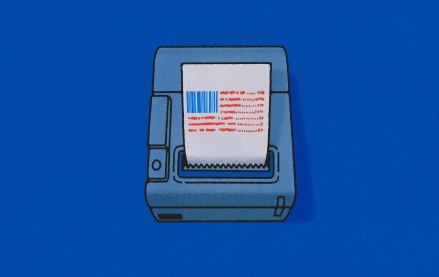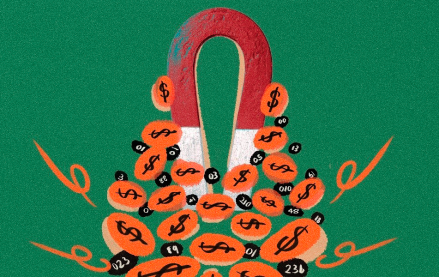
Its death has been foretold countless times by techies and media wonks. It has been revered and loathed, often in the same conversation. It has been at the center of banking coverups, government controversies and celebrity scandals.
There will always be someone trying to replace it with a new technology, but the humble, trustworthy email is unlikely to die anytime soon. Indeed, email is enjoying something of a renaissance, with stalwart publishers such as The New York Times and Atlantic Media joined by newcomers like Vox in producing timely email newsletters.
Not many digital formats will survive, not to mention thrive, for more than 40 years. Yet email has. To understand how the Internet’s beloved and belittled communications workhorse continues to command our attention, let’s consider its history.
1971: Email is invented

In 1971, a young engineer named Ray Tomlinson was looking for a way to send messages between two computers across the ARPAnet, the decentralized computer network that would eventually become the Internet we know today. By connecting the user’s name and the location on the network using the “@” symbol, Tomlinson created the very first email protocol. It’s a system that persists today with the standard user@domain email address.
Ad position: web_incontent_pos1
Seven years later, a 14-year-old programmer named Shiva Ayyadurai was granted a copyright for his “EMAIL” program. Today, Ayyadurai describes himself as “the inventor of email,” which is bold but untrue.
1978: The first spam email is sent
Wednesday, May 3, was a dark day, though no one knew at the time. History records that, on this date, the first spam email was sent. The unsolicited message — an advertisement for a computer product demo — was sent by Gary Turk to 400 of the 2,600 people then working on ARPAnet.
Today, very sophisticated filtering software battles an estimated 150 billion spam emails that are sent every month.
Ad position: web_incontent_pos2
Mid-80s: Community email systems invade the suburbs
 Accessed on affordable home computers like the Apple IIC, Atari 800 and Commodore 64, community computer networks known as bulletin board systems (BBSes) began popping up across the U.S. in the early 1980s.
Accessed on affordable home computers like the Apple IIC, Atari 800 and Commodore 64, community computer networks known as bulletin board systems (BBSes) began popping up across the U.S. in the early 1980s.
On these non-networked precursors to today’s Web, members exchanged text-based messages using formats and standards still in use today, including a subject line and the option to annoy everyone else on the network by accidentally cc:’ing them.
Late-80s: Email lists go mainstream
 Mailing lists have been around for nearly as long as email itself, and early Internet users were no strangers to the “unsubscribe” process. But in the late 80s, as Usenet forums gained in popularity, “listservs” became indispensable tools for managing the overwhelming flood of content that was being produced online.
Mailing lists have been around for nearly as long as email itself, and early Internet users were no strangers to the “unsubscribe” process. But in the late 80s, as Usenet forums gained in popularity, “listservs” became indispensable tools for managing the overwhelming flood of content that was being produced online.
Early-90s: AOL accounts for everyone!
Looking back, we mock the neverending barrage of CDs AOL mailedto everyone in the ‘90s. But without those plug-and-play welcome kits and monthly online subscriptions, the Internet may never have gone mainstream.
With every account, AOL shrewdly provided an email account. For many people, an @aol.com account was their very first email address. For some people, like your mom, it’s still their only email address.
March 2000: Daily Candy launches
 As Daily Candy’s first full-time editor, Pavia Rosati, put it, “Without Daily Candy, there would be no Thrillist, no Tasting Table, no Refinery 29, no Goop.”
As Daily Candy’s first full-time editor, Pavia Rosati, put it, “Without Daily Candy, there would be no Thrillist, no Tasting Table, no Refinery 29, no Goop.”
Launched as a timely roundup of things to do in New York, Daily Candy rocketed to success as the first product to effectively cater to chic, sophisticated women. Indeed, in 2008, Comcast bought the company for a rumored $125 million, or about $50 per subscriber. (After six years of corporate mismanagement, they would eventually shutter it.)
April 1, 2004: Gmail launches

Google’s product wasn’t the first free web-based service to go mainstream (that honor goes to Hotmail, circa 1996), but Gmail rocked the world with its 1gb of storage and slick, Ajax-enabled interface. Once it had left the invite-only beta stage, Gmail enabled marketers to finally deliver ads based on the contents of your private correspondence.
December 16, 2003: “Unsubscribe” gets Fed support
Like so many government programs, the “CAN-SPAM Act of 2003” has a cringe-worthy acronym. And the “Controlling the Assault of Non-Solicited Pornography And Marketing Act,” as it’s officially known, has done little to keep Viagra emails from flooding your inbox.
It is, however, good for one thing: You can thank the Act’s unsubscription compliance clause every time you click an “unsubscribe” button at the bottom of an email.
2003 & 2004: Howard Dean mobilizes via email
 He failed to get elected, but Presidential candidate Howard Dean has had a lasting impact on politics. His team’s use of targeted email campaigns to build awareness and raise money was unprecedented — and, even today, remains a case study for launching so-called “net-roots” campaigns.
He failed to get elected, but Presidential candidate Howard Dean has had a lasting impact on politics. His team’s use of targeted email campaigns to build awareness and raise money was unprecedented — and, even today, remains a case study for launching so-called “net-roots” campaigns.
Ten years later, email marketing is a staple of political campaigns large and small. Whether you’re an Obama supporter or a Glenn Beck fan, an Amnesty International member or a diehard Ted Nugent fan, there’s a mailing list catering to your interests.
2011: Emails get pretty
For designers, the holy grail of email design has been consistency. Alas, even today, it’s not possible to guarantee, with 100% certainty, that a gorgeous design will look the same across devices and platforms. But we’re getting close.
A major milestone was reached in 2011, when email software and web browsers adopted CSS3 compliance per the W3C specs. Additionally, Outlook 2011 for Mac adopted WebKit — making it possible to design pretty emails for pretty much every Mac user.
Suddenly, we no longer needed to choose between HTML and “plain text format” — and our mornings could start with beautifully designed newsletters that looked great both on our iPhones and laptops. It’s little surprise that, by early 2012, mobile email readership overtook desktop and webmail.
2013: Powered by HTML5, the next generation launches

Despite being more than 40-years-old, the dependable email continues to inspire new products and offerings. Thanks in large part to HTML5’s interactive capabilities, cross-device design responsiveness and ability to host programmatic elements, a new generation of email newsletters is arriving inboxes around the world.
To name just a few, The Skimm is a daily newsblast that’s gaining popularity among Millennial women; Gwynyth Paltrow’s Goop may be on the receiving end of jokes for its earnest tone, but it’s growing at a rapid pace. Even that ultimate youth-market magnet, Buzzfeed, has embraced email; some would say they’re doing it better than anyone else.
Clearly, email is here to stay.
More from Digiday
Sliders test article
Amazon bulldozes into new markets, upending the status quo and challenging rivals. Today, it’s the turn of the ad-supported streaming world, and Amazon is coming out of the gate strong. Why, you ask? Because Amazon is serving marketers an opportunity beginning today to reach a whopping 115 million monthly viewers in the U.S. alone, courtesy […]

How CTV and DOOH are growing this political season for smaller agencies
Connected TV and digital out-of-home are playing a bigger role in upcoming elections and politics – especially for smaller agencies looking to place clients’ dollars.

CMO Strategies: Advertisers identify the top attributes on ad-supported streaming platforms
This is the third installment in Digiday’s multi-part series covering the top ad-supported streaming services and part of Digiday’s CMO Strategies series. In this report, we examine which ad attributes matter the most to marketers on streaming platforms.
Ad position: web_bfu